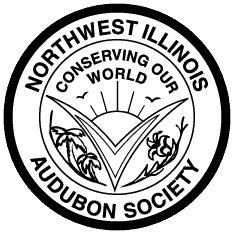Take a walk noticing the different conifers in your yard and neighborhood. Collect some of the cones and needle clusters. Are the tops of the trees rounded or pointed? How are the needles of various conifers different? How might animals use conifers?
Kids and adults alike can hunker down with these two coloring books (or others); all that you learn in these can sharpen awareness when you then take them along on late winter walks.
Birdwatchers Coloring Book, Dover Nature Coloring Books.
A Walk in the Woods, Dover Nature Coloring Books. For all ages. The woods in all seasons are celebrated: includes the amazing life below pond ice and the early spring flowers.
Family Activity
February or March can seem dreary, so looking for the gift of colors can help!
Go on an adventure with others. Bring a notebook and colored pencils or markers. Look for all different shades of color as you explore and take note of them in your notebook.
Look for BLACK – Such as the black feathers of an American Crow or the black scat of a mammal.
Look for BROWN, such as mud emerging from the melting snow, the tree trunk, or the Brown Creeper eating insects on the tree trunk!
Look for RED – The red coloring found in the Red-bellied Woodpecker, Red-headed Woodpeckers, or male Downy Woodpeckers.
Look for ORANGE – Sometimes fungi are orange or maybe you’ll spot a Baltimore Oriole.
Look for YELLOW – Like in the American Goldfinch or the rays of the warming sun that is now out longer!
Look for GREEN – The needle like leaves of evergreen trees or some mosses emerging from under the melting snow.
Look for BLUE – Blue Jays and American Bluebirds are common and easier to see against some snowy WHITE backdrops.
What other colors can you find? The world really is a colorful place!
Play a Migration Game
Several family members or friends can pretend to be a flock of migrating birds—perhaps in a V-shape as with geese. Have them rotate position so the lead bird can go to the back for a break and another moves into leadership.
Birds call to signal each other – you can make this fun by having the lead bird call back things like, “You getting too tired, Jack?” or “How are you doing, Livy?”
Make a Bird Bath
As migration brings more birds to our area, you can welcome them with a homemade bird bath as well as commercial ones. They can drink and bathe and fluff their feathers after their long journey. You can simply use a garbage lid. Or use large plant saucers or shallow bowls placed on tree stumps. The water should be no more than 3 inches deep. If it is deeper than that, you can put gravel or stones in the bottom—which is a good idea anyway to anchor it more firmly.
Be sure to change the water and to keep it clean; you can hose it down for a quick cleaning; occasionally wash with warm water and soap and a brush; scrub it vigorously, then rinse thoroughly. An adult can add a little bleach to the water; in that case, take special care to rinse thoroughly. Put your birdbath near shrubs or trees.
Decorate Windows to Prevent Birds from Crashing into Them
- Use sparkly ribbons or strips of black garbage bags; the glitter and flutter will help to warn birds away.
- Or you can draw flowers or squiggly lines with tempura paint.
Ideally, these devices would be about 4 inches apart, but you can judge how much you need by whether birds frequently hit your windows.
Do the Feather Test
Why don’t ducks get wet? Ducks have glands at the base of their feathers that release oil to spread over the top layer of feathers.
Take two feathers: Coat one with vegetable oil. Dip each in water. What happens? Can you see how the oil prevents water from soaking the feather?
Feed the ducks – but not with bread. Bread isn’t good for ducks and can make them sick. Instead try grapes cut in half, frozen peas that have been defrosted, birdseed, cracked corn, barley, or oats.
Since Valentine’s Day is in February, a fun craft to do would be to make a heart owl. Carefully cut out a heart-shaped head, feet, and a set of wings from construction paper, then glue them on to the edges of a paper plate so that it resembles an owl. You can use googly eyes or just draw your own eyes on, and write a clever phrase, such as “Hoo loves you?” in the middle.

